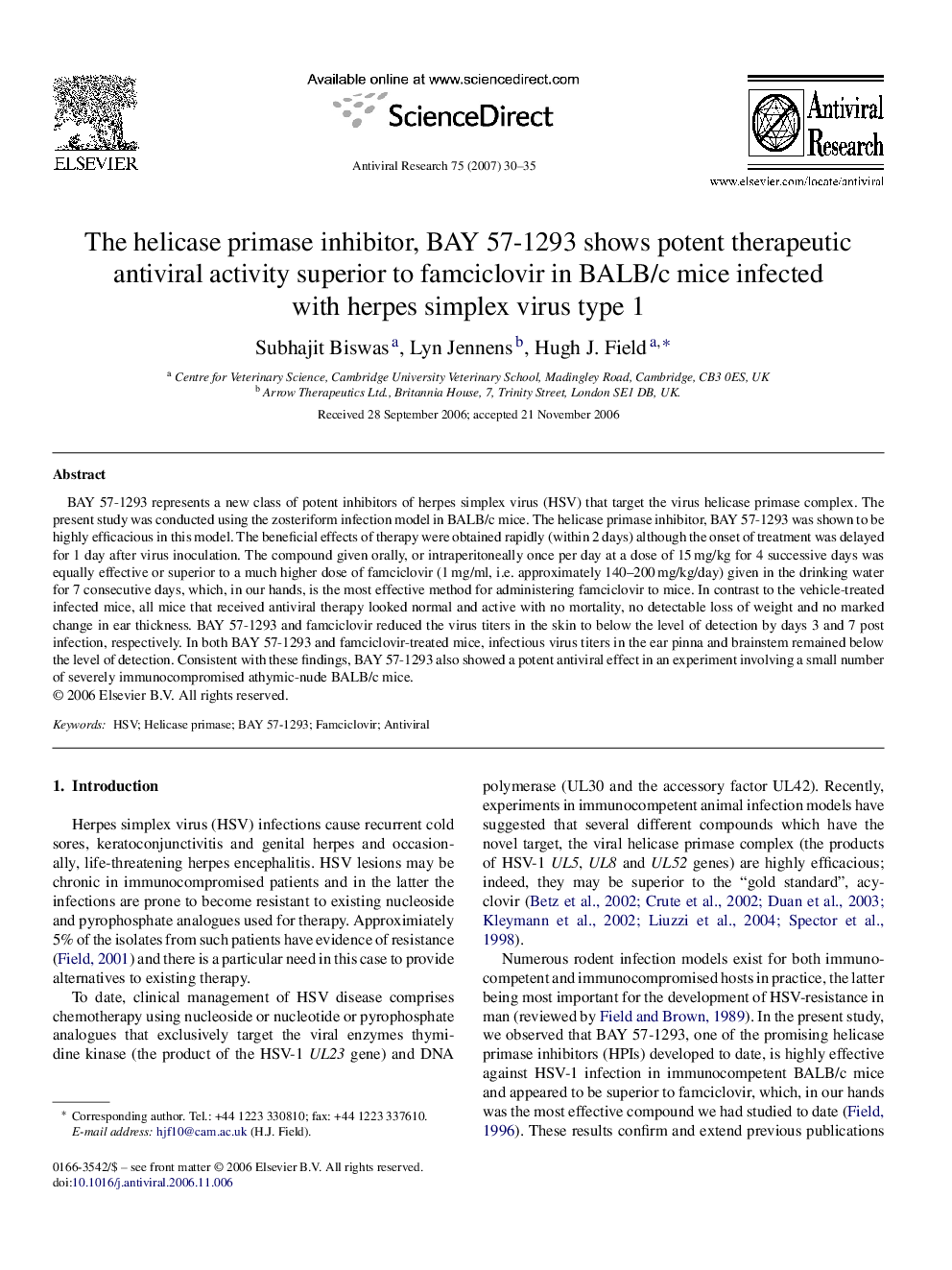| Article ID | Journal | Published Year | Pages | File Type |
|---|---|---|---|---|
| 2511278 | Antiviral Research | 2007 | 6 Pages |
BAY 57-1293 represents a new class of potent inhibitors of herpes simplex virus (HSV) that target the virus helicase primase complex. The present study was conducted using the zosteriform infection model in BALB/c mice. The helicase primase inhibitor, BAY 57-1293 was shown to be highly efficacious in this model. The beneficial effects of therapy were obtained rapidly (within 2 days) although the onset of treatment was delayed for 1 day after virus inoculation. The compound given orally, or intraperitoneally once per day at a dose of 15 mg/kg for 4 successive days was equally effective or superior to a much higher dose of famciclovir (1 mg/ml, i.e. approximately 140–200 mg/kg/day) given in the drinking water for 7 consecutive days, which, in our hands, is the most effective method for administering famciclovir to mice. In contrast to the vehicle-treated infected mice, all mice that received antiviral therapy looked normal and active with no mortality, no detectable loss of weight and no marked change in ear thickness. BAY 57-1293 and famciclovir reduced the virus titers in the skin to below the level of detection by days 3 and 7 post infection, respectively. In both BAY 57-1293 and famciclovir-treated mice, infectious virus titers in the ear pinna and brainstem remained below the level of detection. Consistent with these findings, BAY 57-1293 also showed a potent antiviral effect in an experiment involving a small number of severely immunocompromised athymic-nude BALB/c mice.
